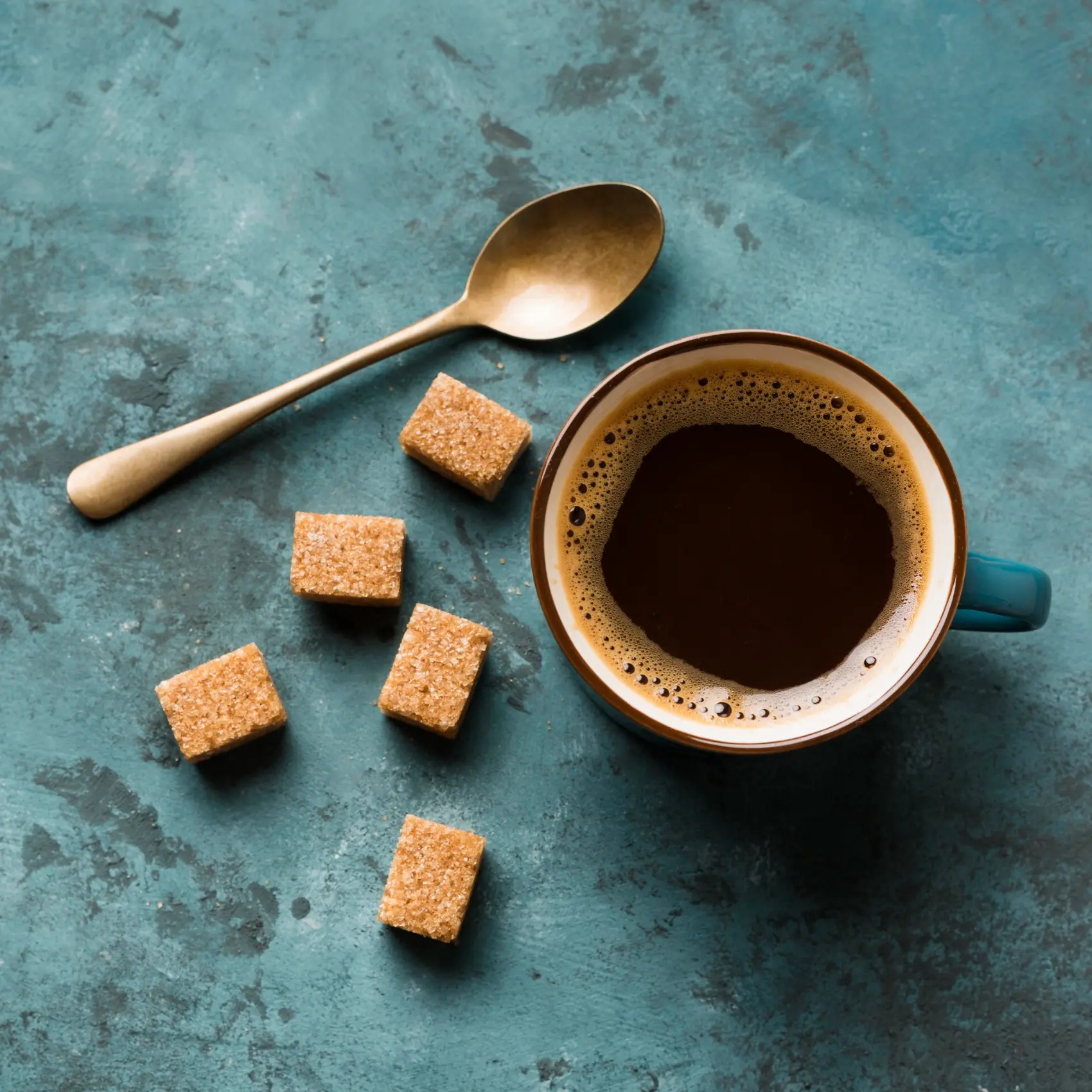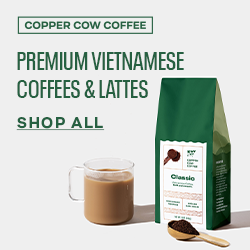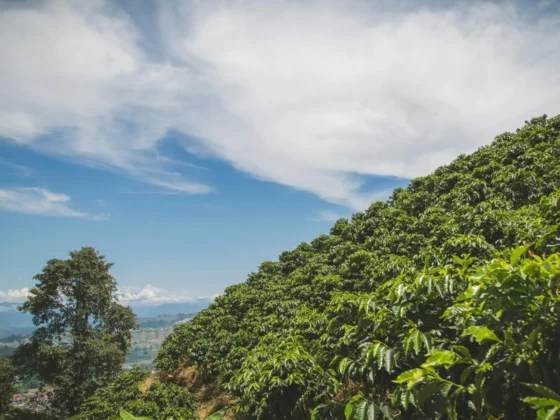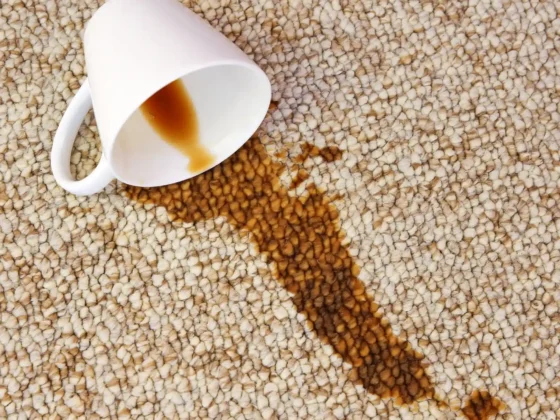In the intricate tapestry of coffee culture, the infusion of brown sugar stands out as a unique thread, weaving a narrative of rich flavors, health advantages, and a storied history. Brown- sugar, celebrated for its molasses content and caramel undertones, has not only carved a niche in the culinary landscape but has also made a notable impression on coffee enthusiasts worldwide. From the subtle allure of Starbucks’ brown sugar syrup to the expert-backed recommendations on its optimal usage, the adoption of brown sugar in coffee has grown from a mere sweetening alternative to an art form in its own right. This exploration into this type of sugar in coffee delves into the multifaceted benefits it offers, the distinct taste profile it introduces, and its fascinating origins.
Join us as we journey through the depths of this sweet revolution, promising every reader a richer understanding and appreciation of their next brown sugar-infused brew.
Tired of reading? Give your eyes a rest and listen to the article below.
- Introduction & Key Takeaway
- https://app.mysoundwise.com/tracks/16989668216518103e.mp3
- Historical Background of Brown Sugar in Coffee
- https://app.mysoundwise.com/tracks/16989668446549434e.mp3
- Health and Nutritional Impacts
- https://app.mysoundwise.com/tracks/16989668712541453e.mp3
- Tasting Notes and Pairing Recommendations
- https://app.mysoundwise.com/tracks/16989668994465195e.mp3
- Crafting Coffee with Brown Sugar Syrups
- https://app.mysoundwise.com/tracks/16989669287319070e.mp3
- Popular Coffee Recipes with Brown Sugar
- https://app.mysoundwise.com/tracks/16989669550692622e.mp3
- Expert Recommendations on Brown Sugar Usage
- https://app.mysoundwise.com/tracks/16989669831594285e.mp3
- Conclusion & FAQs
- https://app.mysoundwise.com/tracks/16989670093362732e.mp3
Brown Sugar in Coffee: Key Takeaway
- Rich Flavor Profile: This sugar introduces a unique caramel undertone and a hint of molasses to coffee, enriching its flavor depth and offering a distinct twist compared to traditional white sugar.
- Versatile Applications: From crafting specialty drinks like the iced brown sugar oatmilk shaken espresso to making delectable brown sugar syrups, the versatility of this type of sugar allows for a wide range of coffee preparations.
- Expert Insights: The best outcomes arise when the correct ratios are used, and there’s continuous stirring during preparation. Special attention to detail can truly enhance the coffee experience.
- Specialty Coffee Shop Adoption: Establishments, including renowned brands like Starbucks with their brown-sugar syrup, have recognized and embraced the appeal of this type of sugar, signaling its prominence in modern coffee culture.
- Deep-Rooted Origins: Beyond its taste, this sugar has a rich history and traditional value, further enhancing its significance in the contemporary world of coffee enthusiasts.
Historical Background of Brown Sugar in Coffee
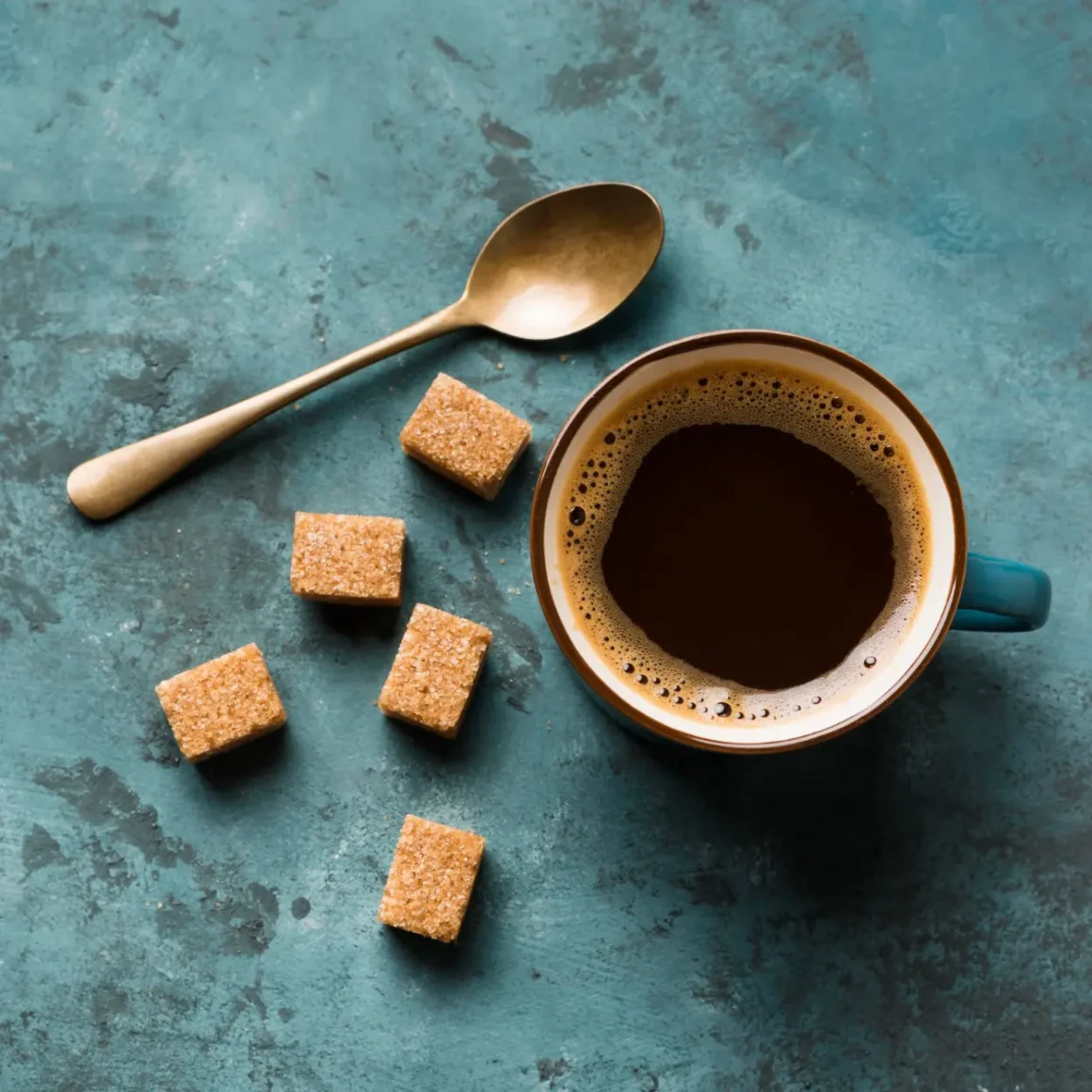
The tale of this type of sugar intertwined with coffee has an intricate history, tracing back centuries. As coffee cultivated its revered status across civilizations, this sugar emerged as a pivotal enhancer. Let’s journey through its fascinating origin, evolution, and cultural nuances that dictated our coffee-sweetening preferences.
Origins of Brown Sugar
Brown sugar’s illustrious history is a rich amalgamation of time-honored traditions, trade routes, and evolving techniques, tracing its roots back to ancient civilizations and flourishing during the Middle Ages.
- Sucrose and Molasses: At its core, this sugar is derived from sucrose. The distinctive brown shade is attributed to the molasses it contains. Sometimes, molasses is added to pure white sugar, transforming its color. This technique often serves as a cost-cutting measure during sugar production. (1)
- Extraction and Production: Initially, the harvested canes or beets undergo crushing and heating, resulting in a thick, dark syrup called molasses. (2) When this syrup is purified and crystallized, raw sugars are obtained. The depth of color in this sugar is attributed to the molasses content it retains.
- Natural Brown Sugar Varieties:
- Turbinado: A product of the initial extraction of sugarcane juice and crystallization, Turbinado sugar retains a hint of its original molasses, resulting in a light caramel flavor.
- Muscovado: One of the least refined sugars, Muscovado retains most of its natural molasses, giving it a strong flavor and a sticky, coarse texture. It’s a favorite in robust dishes, from marinades to rich desserts.
- Demerara: Named after the Demerara colony in Guyana where it was originally produced, this sugar is characterized by its crunchy, large crystals and a light amber hue, offering subtle toffee nuances when tasted.
Delving into the origins and production of this kind of sugar uncovers an intricate tapestry of processes, from age-old techniques to modern refinements, and showcases the diverse varieties that have graced our tables across the ages.
Evolution of Coffee Sweeteners
As coffee became an integral ritual across continents, the evolution of its sweeteners also witnessed a transformation, with brown-sugar playing a pivotal role.
- Brown-Sugar’s Historical Significance: In the annals of culinary history, this sugar’s widespread use as a coffee sweetener was relatively recent, gaining momentum around the 16th century. Its rise in popularity was driven by European sugar plantations in the 1700s Caribbean, making it an affordable staple in England and its colonies.
- The Triangle Trade Influence: This infamous trading pattern played a role in this type of sugar industry. Goods were shipped from Europe to Africa, enslaved individuals were transported to the Caribbean, and finally, products like sugar were sent to colonies and Europe.
- Modern Adaptations: Presently, this sugar, with its molasses undertone, is used to sweeten an array of beverages, including our beloved coffee, adding a distinct richness to the flavor profile.
The journey of coffee sweeteners, with this kind of sugar at its helm, underscores the ever-evolving tastes and socio-economic influences of our global society.
Cultural Impact on Coffee Preferences
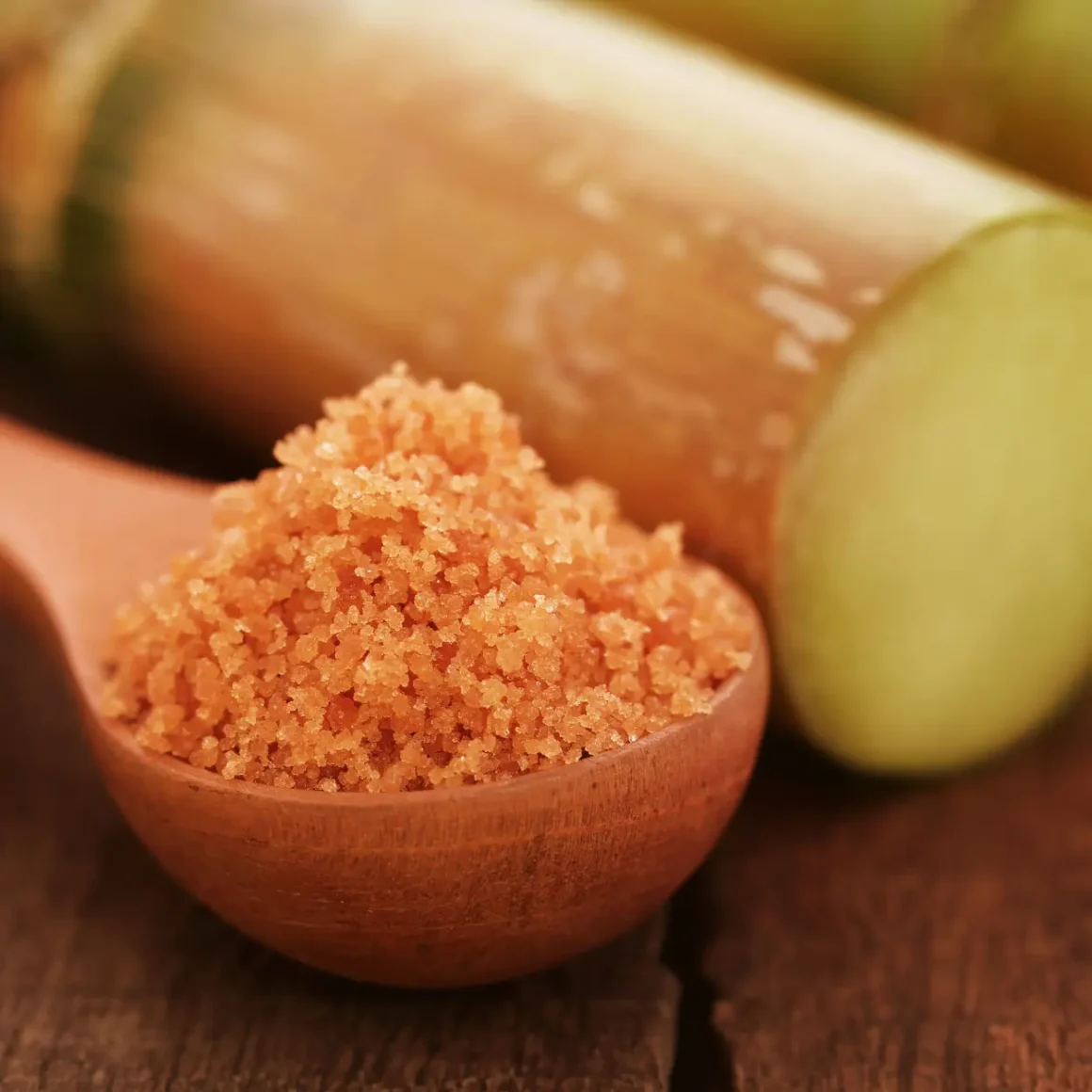
Coffee, a universal beverage, has been shaped and molded by cultural inclinations, with this type of sugar playing a distinct role in this narrative.
- Sugarcane’s Expansion: Originally from southwest Asia, sugarcane made its way to the Mediterranean by the 12th and 13th centuries. This journey, coupled with mentions in Marco Polo’s chronicles, marked the early cultural influences on brown-sugar consumption.
- Regional Sugar Hubs: The Caribbean, with top players like Cuba, Barbados, and Jamaica, became significant in the sugar landscape by the 1700s. (3) Other early pioneers included Santo Domingo and Puerto Rico.
- Contemporary Preferences: Today’s coffee preferences have been shaped by historical and cultural nuances. Whether it’s the rich caramel notes of Turbinado or the toffee-like sweetness of Demerara, this sugar’s impact is evident in coffee traditions worldwide.
The cultural tapestry surrounding coffee has been significantly colored by this sugar, a testament to its enduring appeal and influence on global palates.
Health and Nutritional Impacts
The emphasis on health and nutrition in the modern age has prompted deeper exploration into the ingredients we consume daily. One such staple, especially in beverages like coffee, is sugar. In this discourse, we delve into the health and nutritional implications of brown and white sugar, shedding light on their comparative benefits, potential health concerns, and their unique impact when paired with coffee.
Nutritional Comparison: White vs. Brown Sugar
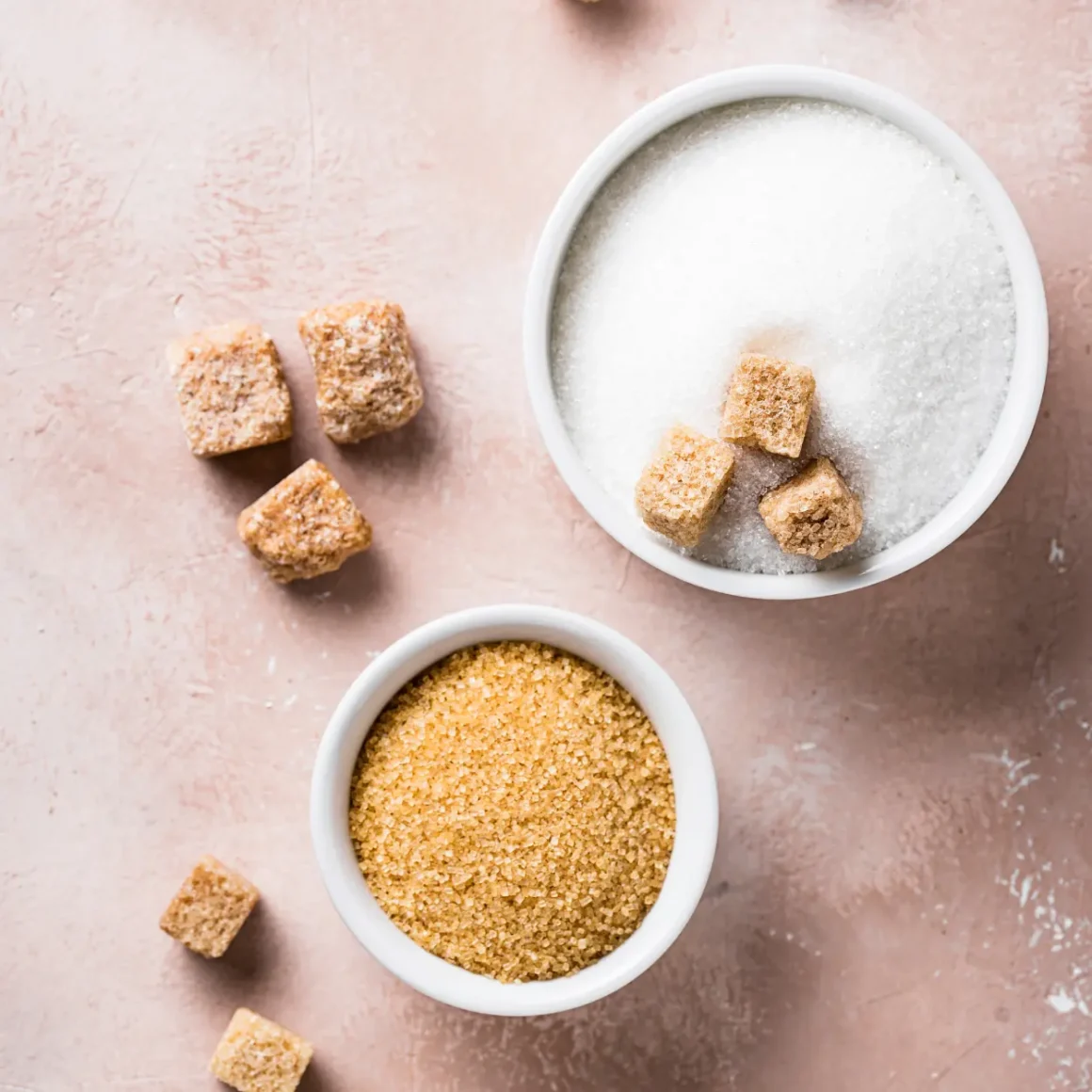
The age-old debate on brown versus white – whether it’s rice, bread, or sugar – has long occupied discussions on nutritional value. This section seeks to draw a precise comparison between white and brown-sugar, especially when added to coffee.
- Caloric Content: A tablespoon of white sugar contains 16,3 calories, whereas its brown counterpart holds 15. This minor difference highlights that increasing the amount of either sugar type can amplify caloric intake.
- Molasses Content: The distinct taste of this sugar in coffee stems from molasses, which is absent in white sugar. Although molasses introduces trace minerals, the health benefits are almost analogous to white sugar in coffee.
- Taste and Appearance: While white sugar primarily sweetens, lending no color to beverages, this type of sugar offers a rich, molasses-infused taste, and a deeper hue to drinks like coffee.
The choice between white and brown-sugar in coffee essentially pivots on personal taste preferences, with their nutritional differences being almost negligible.
Health Benefits of Brown Sugar
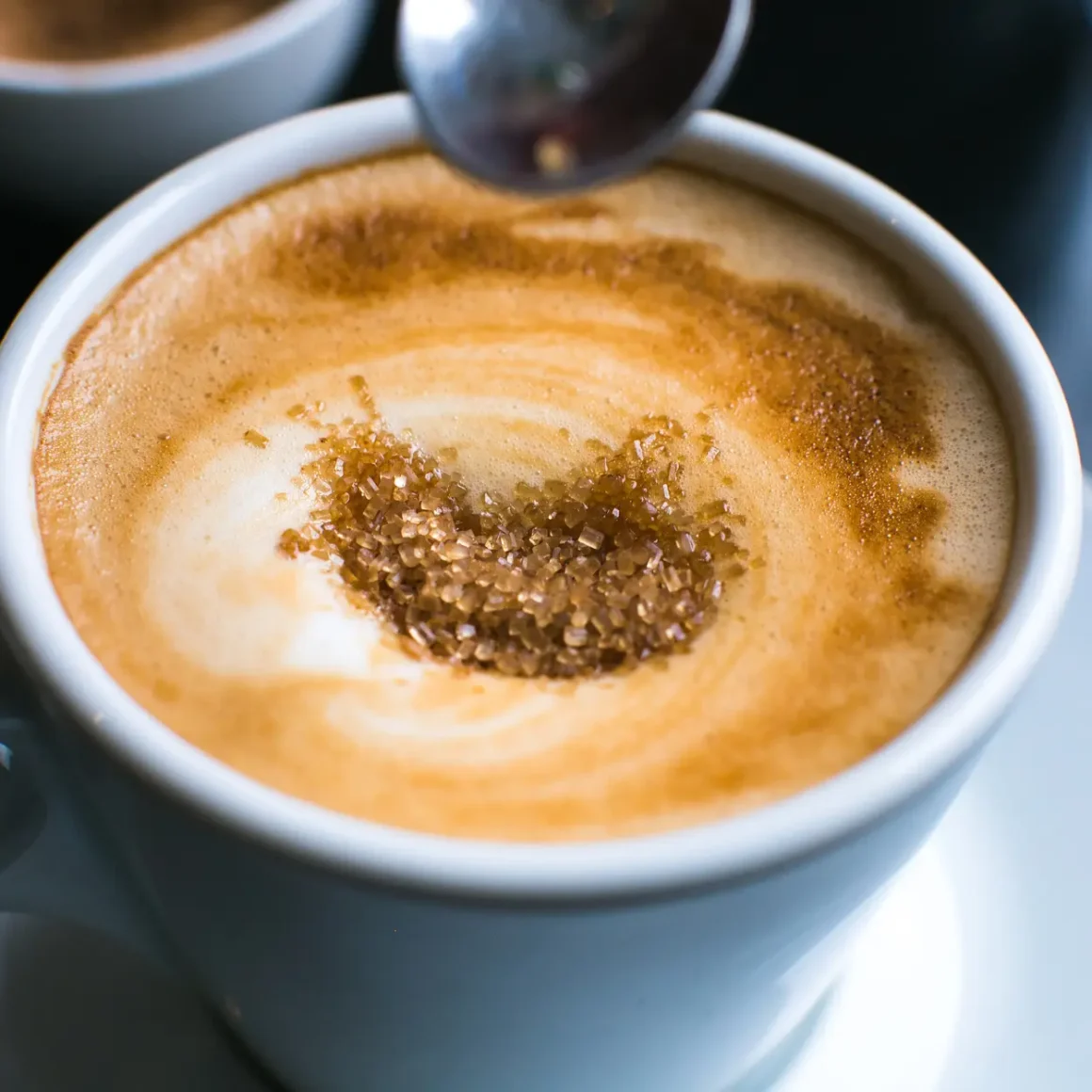
Often perceived as the healthier counterpart due to its natural hue and molasses content, let’s discern the health advantages of this sugar.
- Trace Minerals: This sugar contains minute quantities of minerals such as calcium, potassium, and iron, courtesy of molasses. However, these amounts are too minor to yield significant health dividends.
- Iron Intake: This sugar typically contains slightly more iron than white sugar because it retains some of the molasses from the sugar cane refining process. Molasses contain trace amounts of iron, and this is what gives this type of sugar its characteristic color and flavor. Iron is indeed an essential mineral that plays a crucial role in the formation of hemoglobin in red blood cells, which is responsible for carrying oxygen throughout the body.
- Organic Variants: For those with specific dietary preferences, organic brown-sugar may address concerns about gluten content and is often perceived as a vegan-friendly option. However, it’s crucial to understand the production methods, as some processes involve bone char.
While this type of sugar does introduce minor nutritional advantages and a distinct taste, its health benefits remain largely similar to its white counterpart.
Possible Health Concerns with Excessive Consumption

Excess of anything is seldom beneficial. The same applies to sugar. Let’s understand the potential health risks associated with excessive sugar consumption, be it brown or white.
- Health Risks: Consuming sugar in large amounts, regardless of its type, is associated with several health issues such as obesity, type 2 diabetes, and heart disease.
- Dietary Needs: Every sugar form, including white sugar in coffee or its brown counterpart, is a simple carbohydrate. Although it provides immediate energy, overconsumption can lead to excess carbohydrates being stored as fat.
- Minimal Daily Requirement: Even though this type of sugar isn’t significantly high in calories, it’s paramount to understand that our bodies necessitate minimal sugar daily. Exceeding this can lead to adverse health implications.
Moderation is key. Regardless of whether one opts for brown or white sugar in their coffee, it’s vital to consume within limits, ensuring optimal health and well-being.
Tasting Notes and Pairing Recommendations
Venturing into the world of coffee is an immersive experience, replete with endless taste combinations and pairing possibilities. A crucial factor that enhances this experience is the sweetener, with brown-sugar being a notable contender. Let’s navigate through the intricate taste profile of brown sugar in coffee, discover the best coffee beans to pair it with, and explore additional ingredients to elevate the coffee experience.
The Taste Profile of Brown Sugar in Coffee
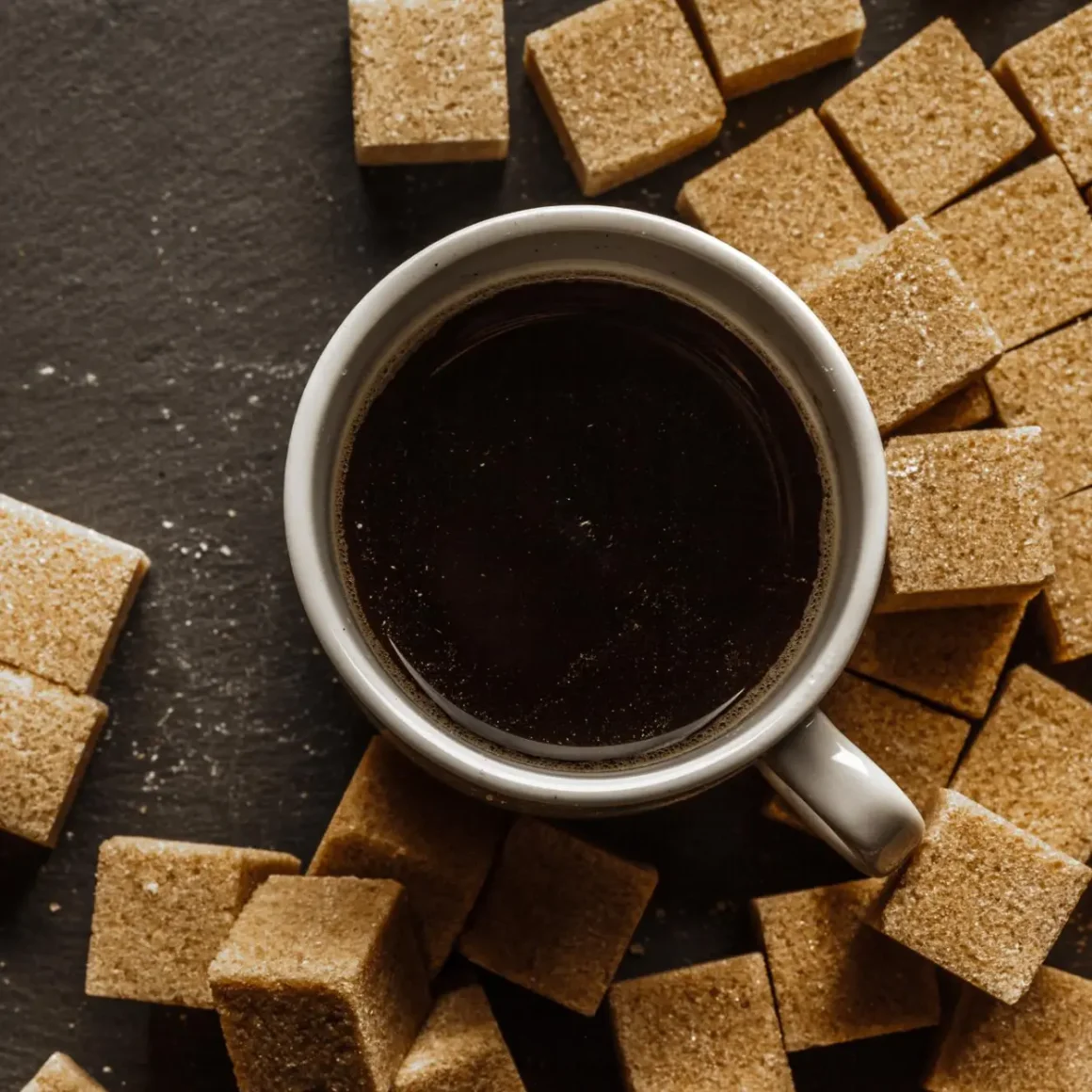
This type of sugar, distinct from its white counterpart, possesses a rich profile infused with the depth of molasses. The integration of this type of sugar into coffee can transform the beverage’s character, making it crucial to understand its nuances.
- Flavor Nuances: This sugar offers layers of caramel, toffee, and molasses, creating an unmistakably profound taste that is evident across its various types, from light brown to dark brown, and even panela or unrefined sugar.
- Comparison with White Sugar: While white sugar primarily lends sweetness, brown introduces an earthy, genuine touch, often making coffee feel more authentic. In contrast, white sugar can sometimes emulate a more artificial sweetness.
- Quantity Considerations: Depending on its type, the robustness of this type of sugar may require adjustments in quantity. Its profound flavor could balance the coffee’s natural bitterness, leading to a possible reduction in the amount needed, especially with organic variants.
Choosing this sugar for your coffee is less about simply sweetening and more about embracing a grounded, intricate taste that enhances the beverage’s overall flavor.
Best Coffee Beans for Brown Sugar Pairing
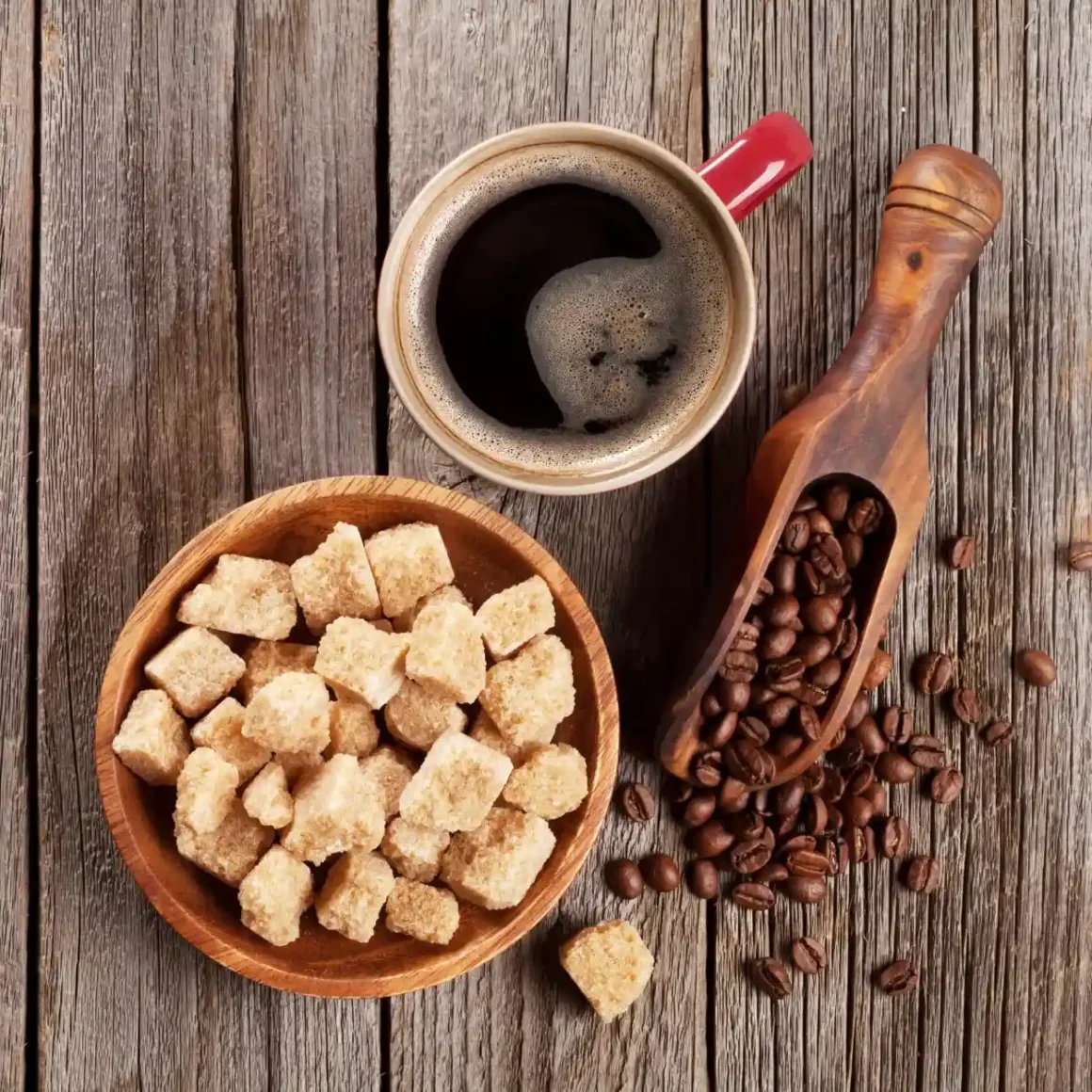
Pairing this type of sugar with the right coffee bean is essential for a harmonious blend. Given the distinctive flavor of this type of sugar, aligning it with complementary bean roasts can elevate the drinking experience.
- Dark Roasts: This sugar, with its molasses undertones, beautifully complements the chocolate and roasted notes of medium-dark or dark roast coffee. Moreover, dark roasts tend to have a sweeter profile, making them a preferable choice for pairing.
- Light Roasts: Although light roasts may not be the primary recommendation for this kind of sugar, they might still resonate with some palates. The lighter profile may contrast with brown sugar’s robustness, leading to a unique taste combination.
- Quality Matters: Begin with the best coffee, preferably top-notch arabica. Superior coffee beans often require less sugar, ensuring the taste remains central.
The art of coffee pairing lies in experimentation; while this type of sugar finds its best coffee match in darker roasts for many, exploring diverse beans ensures you discover your perfect blend.
Enhancing the Coffee Experience with Additional Ingredients
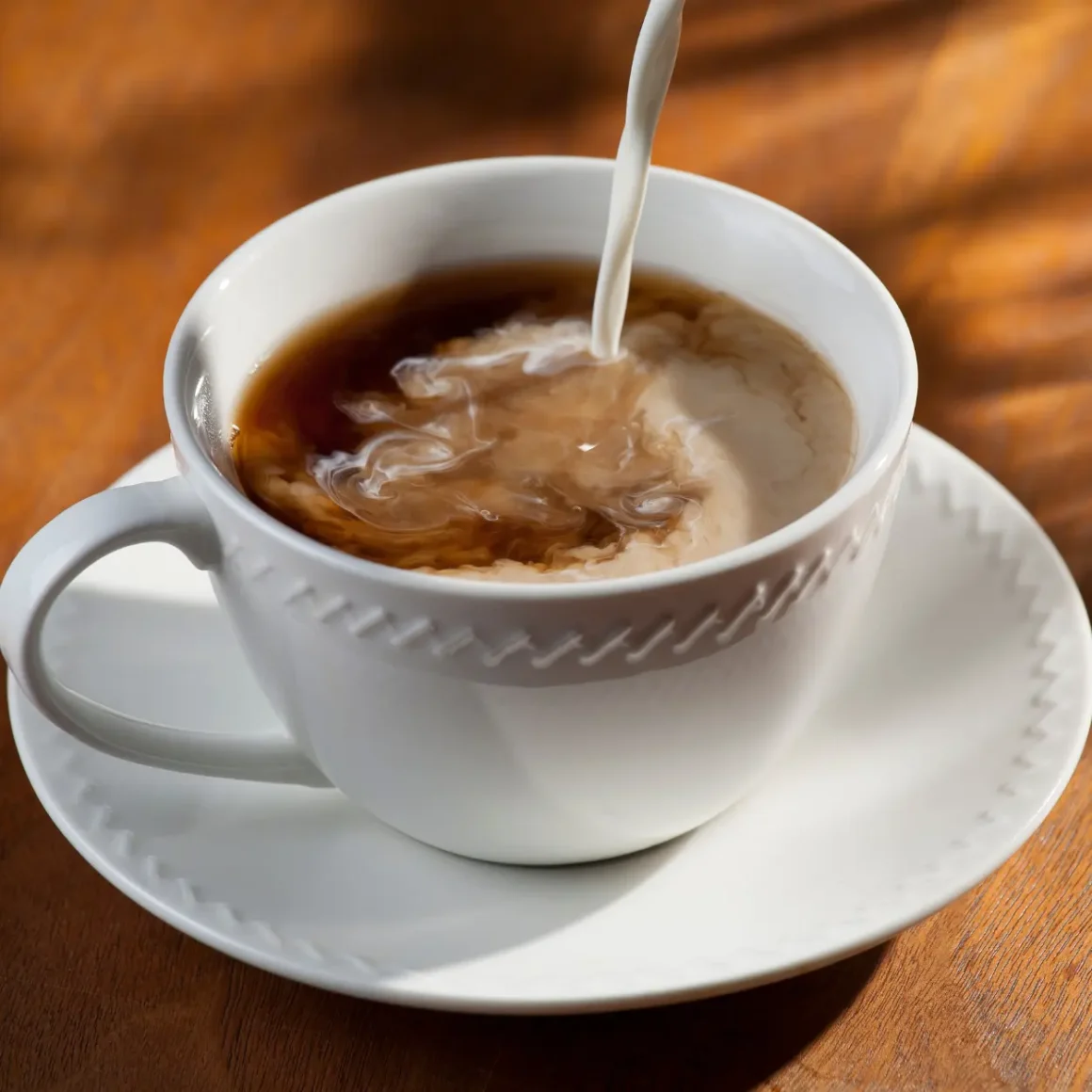
As coffee aficionados continually search for novel ways to refine their brew, introducing complementary ingredients can substantially elevate the experience, especially when this brown sweetener is in the mix.
- Brown Sugar Oat Milk Creamer: This fusion not only enhances the molasses flavor but also lends a creamy texture, making the coffee rich and velvety. It’s a must-try for those seeking a dairy-free alternative.
- Maple Syrup: Although this sugar remains a favored choice for many, in its absence, a natural sweetener like maple syrup can be a worthy substitute, especially considering its caramelized taste that aligns well with coffee.
- Exploring Brewing Methods: The brewing technique can significantly impact the final taste. Trying different methods, from espresso to cold brew, while adjusting this sugar’s quantity, can lead to delightful variations.
While this type of sugar is transformative on its own, coupling it with additional ingredients and varied brewing methods ensures a coffee experience that is both versatile and fulfilling.
Crafting Coffee with Brown Sugar Syrups
A delightful twist to a regular cup of joe, brown sugar syrups can transform your everyday coffee experience into a barista-grade indulgence. Whether it’s a recreation of a popular Starbucks favorite or your own special brew, the inclusion of this syrup not only adds sweetness but also introduces rich caramel undertones, elevating the overall flavor profile. Dive into the world of brown-sugar syrups, and discover how to create, customize, and conserve these liquid gold concoctions for your next coffee escapade.
Basics of Brown Sugar Syrup Preparation

Brown sugar syrups, with their characteristic deep sweetness and rich texture, are a simple yet profound addition to a range of beverages. Drawing inspiration from the Starbucks brown sugar syrup for coffee, here’s a basic guide to creating your own:
Ingredients to Begin With:
- Light Brown-Sugar: The primary element, lending the syrup its signature flavor.
- Water: Used in equal measure with sugar for a balanced consistency.
- Cinnamon Sticks: These add a subtle spicy hint, enhancing the syrup’s richness.
Steps for Stovetop Preparation:
- Combine this sugar, water, and cinnamon sticks in a pot.
- Simmer on medium-low heat, ensuring the sugar dissolves completely.
- Let the mixture bubble for a few minutes, then reduce the heat and let it simmer further.
- Once done, remove it from heat, allow it to cool, and transfer it to a sealed container.
Preparing this syrup is a straightforward process. However, attention to detail, from ingredient proportions to simmering time, ensures you achieve the perfect consistency and flavor every time.
Infusing Flavors: Vanilla, Cinnamon, and More

While the foundational syrup is delightful on its own, flavor infusions can add unique twists to each batch. Depending on personal preferences and the intended use, here are some flavor-enhancing suggestions:
- Vanilla Accent: Add a vanilla bean or a dash of vanilla extract after simmering to infuse a fragrant, sweet aroma to the syrup.
- Alternate Sugars: Experiment with mixing this sugar with white sugar for a milder flavor or use dark brown or coconut sugar to intensify the caramel essence.
- Cinnamon Upgrade: If cinnamon sticks are unavailable, half a teaspoon of powdered cinnamon can be added during simmering. Remember to strain the syrup afterward.
- A Pinch of Salt: A small amount of salt can balance out the syrup’s sweetness, adding depth to its flavor.
With a plethora of infusion options at your disposal, the brown sugar syrup becomes a canvas for flavor creativity, letting you curate a unique blend suited to your palate.
Storing and Using Brown Sugar Syrups for Optimal Freshness
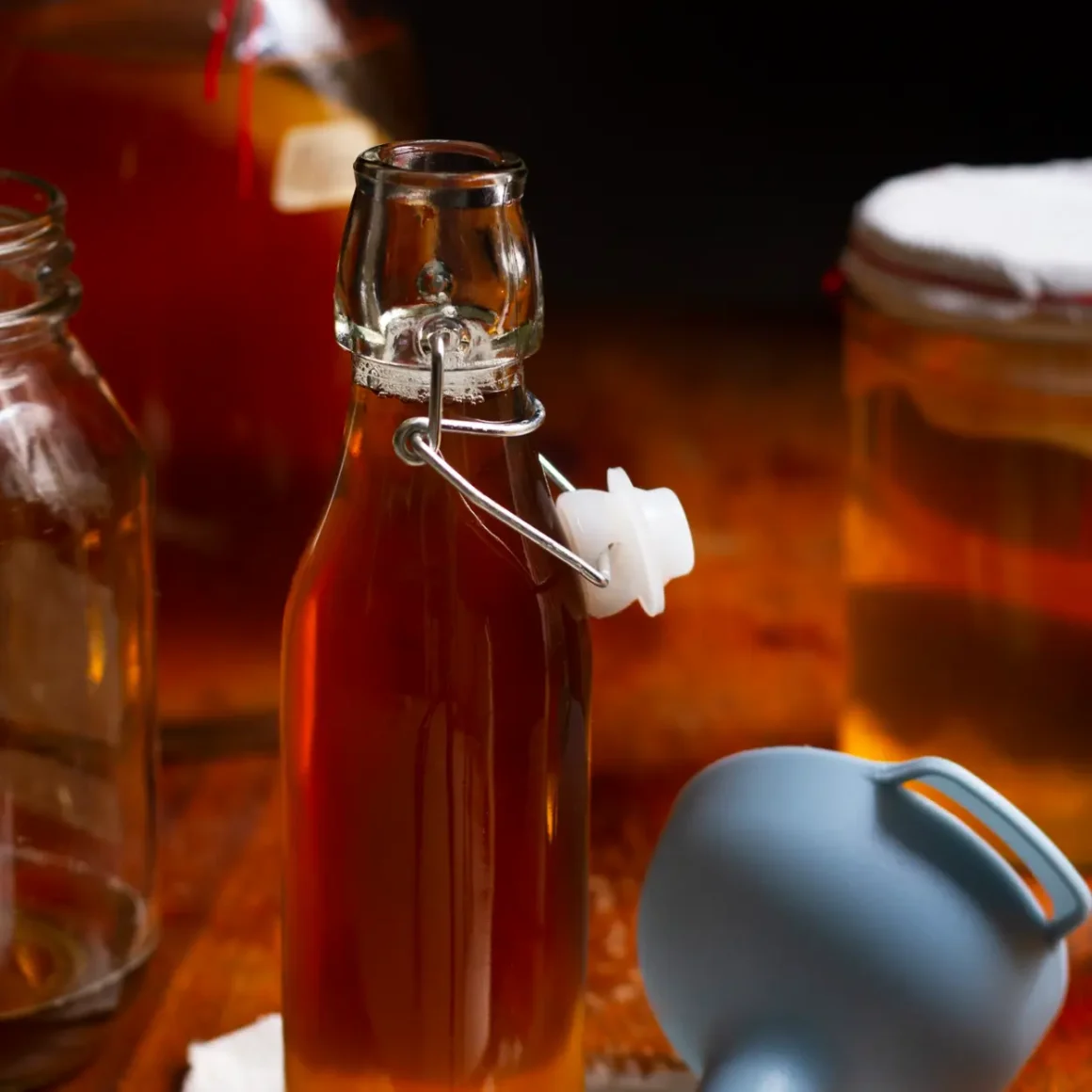
Preserving the freshness of your homemade brown sugar syrup ensures its flavors remain intact with every use. Here’s how to store and use it effectively:
- Refrigeration: To maintain its quality, store the syrup in the fridge. Ideally, it has a shelf life of up to two weeks.
- Airtight Containers: Using sealed containers not only helps in retaining the syrup’s freshness but also prevents unwanted crystallization.
- Using the Syrup: Typically, 1-2 tablespoons (based on individual sweetness preference) can be added to beverages like coffees, teas, lattes, and even desserts.
For those seeking the quintessential Starbucks experience at home, craft an iced brown sugar oat milk espresso shake using the syrup. This brew, reminiscent of the brown-sugar syrup Starbucks is famed for, offers a delightful coffee experience, perfect for warm days.
Popular Coffee Recipes with Brown Sugar
Coffee, universally adored for its robust flavors and invigorating effects, has myriad variations tailored to suit every palate. One such twist that’s making waves among coffee aficionados is the integration of brown-sugar coffee syrup. This versatile sweetener imparts a rich, caramelized depth, offering a unique take on traditional coffee recipes. Dive into this aromatic world as we explore some of the most beloved coffee recipes starring this distinctive sugar.
Iced-Brown Sugar Oatmilk Shaken Espresso
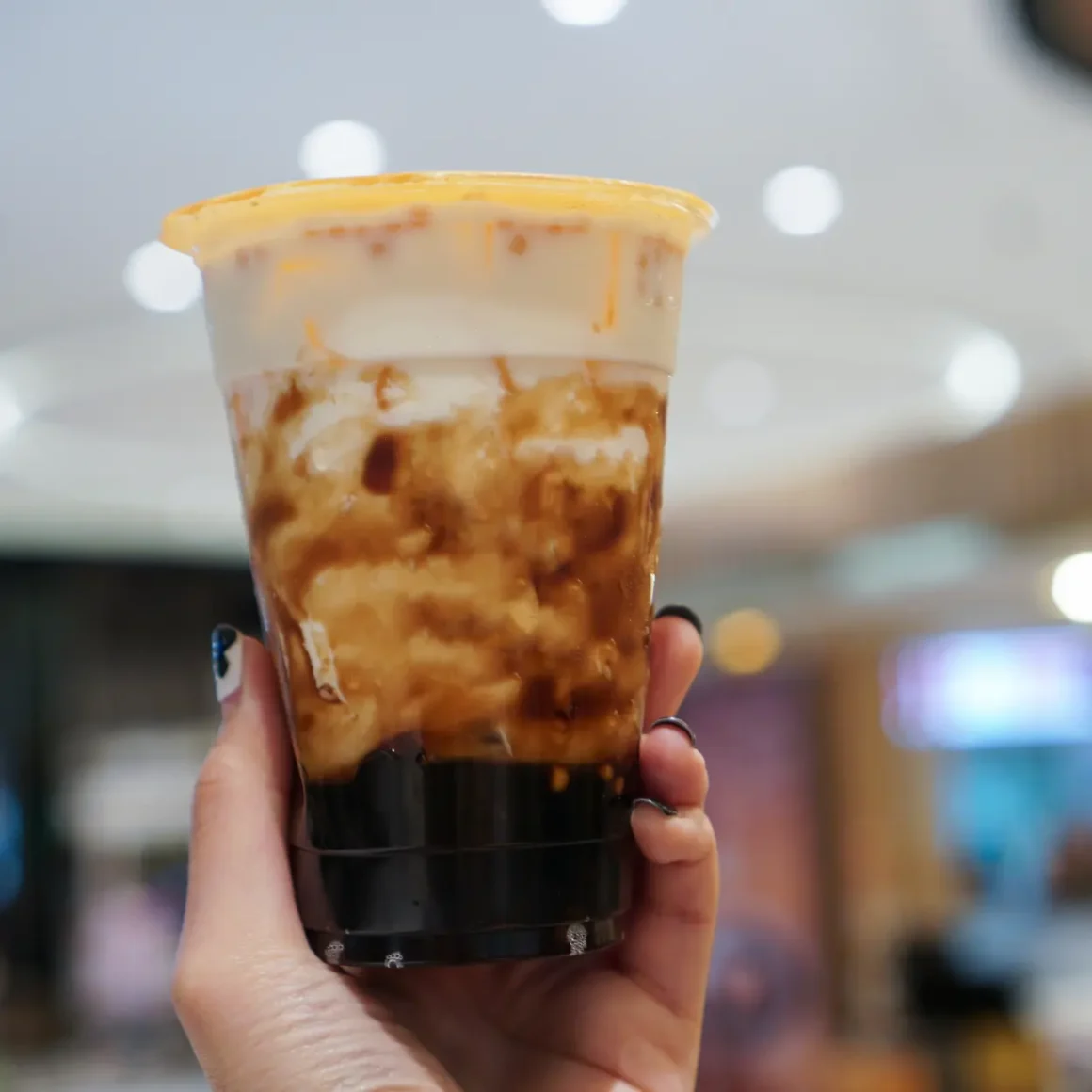
If there’s one drink that has taken the coffee scene by storm, it’s the brown sugar oatmilk shaken espresso. A perfect blend of strength from the espresso and smooth sweetness from the syrup, it’s an experience in every sip.
Ingredients:
- Espresso: The foundation that provides a strong coffee kick.
- Brown-Sugar Coffee Syrup: Adds the distinctive caramel sweetness.
- Oat Milk: Creamy yet dairy-free, it balances the robustness of espresso.
- Ice: For that refreshing chill.
Preparation:
- Brew a strong shot of espresso.
- In a shaker, combine espresso, brown sugar coffee syrup, and ice. Shake vigorously.
- Pour the shaken mixture into a glass, topping it off with oatmilk.
The result is a harmonious dance of bold coffee flavors with the subtle sweetness of brown- sugar, making the shaken espresso an absolute delight.
Brown Sugar Caramel Macchiato
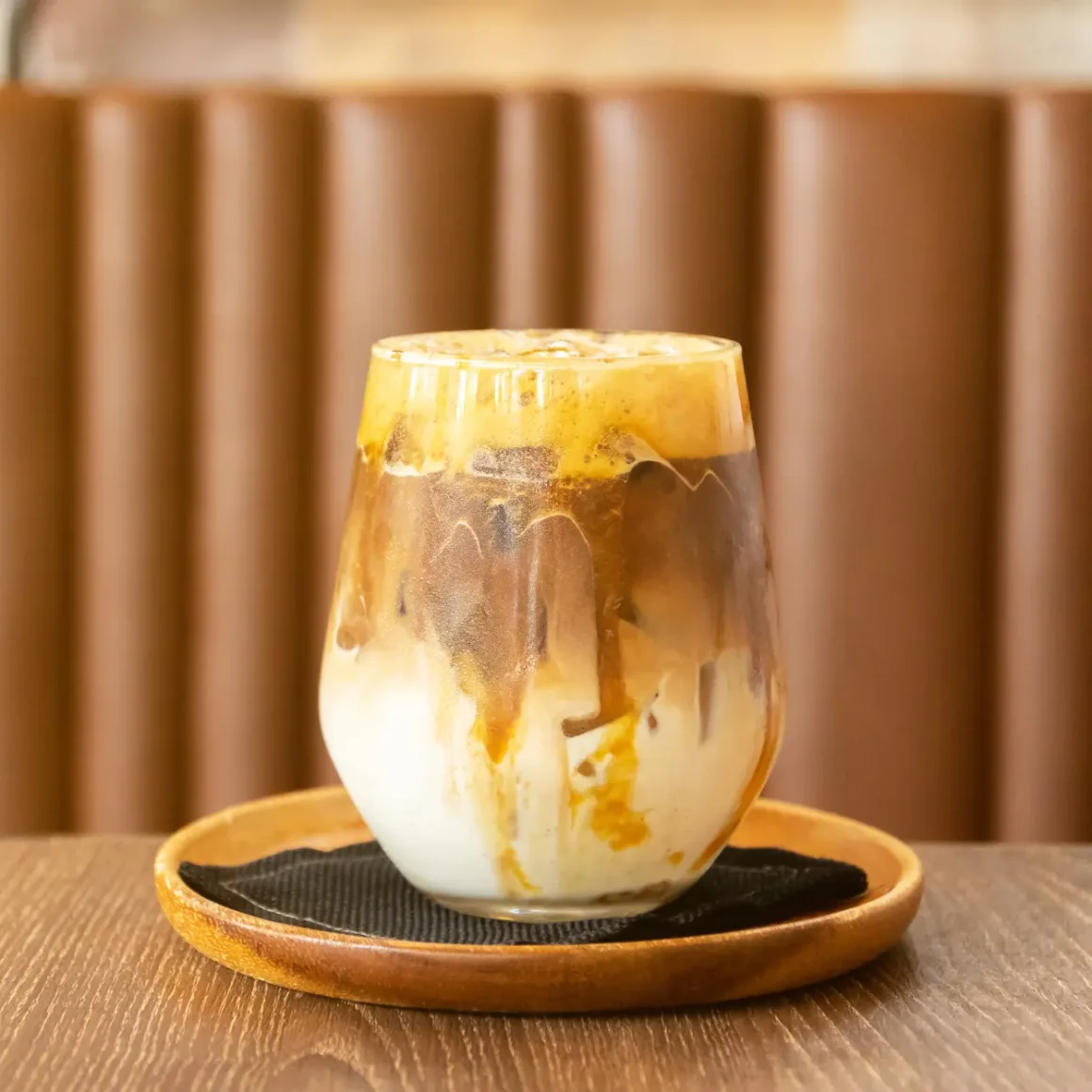
The classic macchiato gets a delightful spin with the introduction of this sweetener.
Ingredients:
- Espresso: The rich coffee essence.
- Brown-Sugar Coffee Syrup: For that caramelized sweetness.
- Milk: The creamy component.
- Caramel Drizzle: A garnish that ties everything together.
Preparation:
- In a saucepan, heat milk without letting it boil. Froth it using a milk frother.
- In a glass, add the coffee syrup followed by the frothed milk.
- Slowly pour in the espresso, ensuring the distinctive layers are visible.
- Drizzle with caramel on top.
This variation offers a perfect blend of sweetness and coffee intensity, making the macchiato experience even more memorable.
Spiced Brown Sugar Cold Brew

Cold brew, known for its smooth taste, pairs wonderfully with the richness of this sugar.
Ingredients:
- Cold Brew Coffee: The base for this refreshing drink.
- Brown-Sugar Coffee Syrup: Introducing the sweet depth.
- Cinnamon and Nutmeg: Spices that elevate the drink’s aroma and flavor.
- Ice: Essential for a chilly beverage.
Preparation:
- Prepare cold brew coffee in advance, letting it steep for 12-24 hours.
- In a glass, combine ice, cold brew, coffee syrup, and a pinch of cinnamon and nutmeg.
- Stir well to ensure an even mixing of flavors.
With the spiced-brown sugar cold brew, every sip offers a beautiful blend of smooth cold brew coffee and warm spices, perfect for a relaxed afternoon.
Brown Sugar Latte
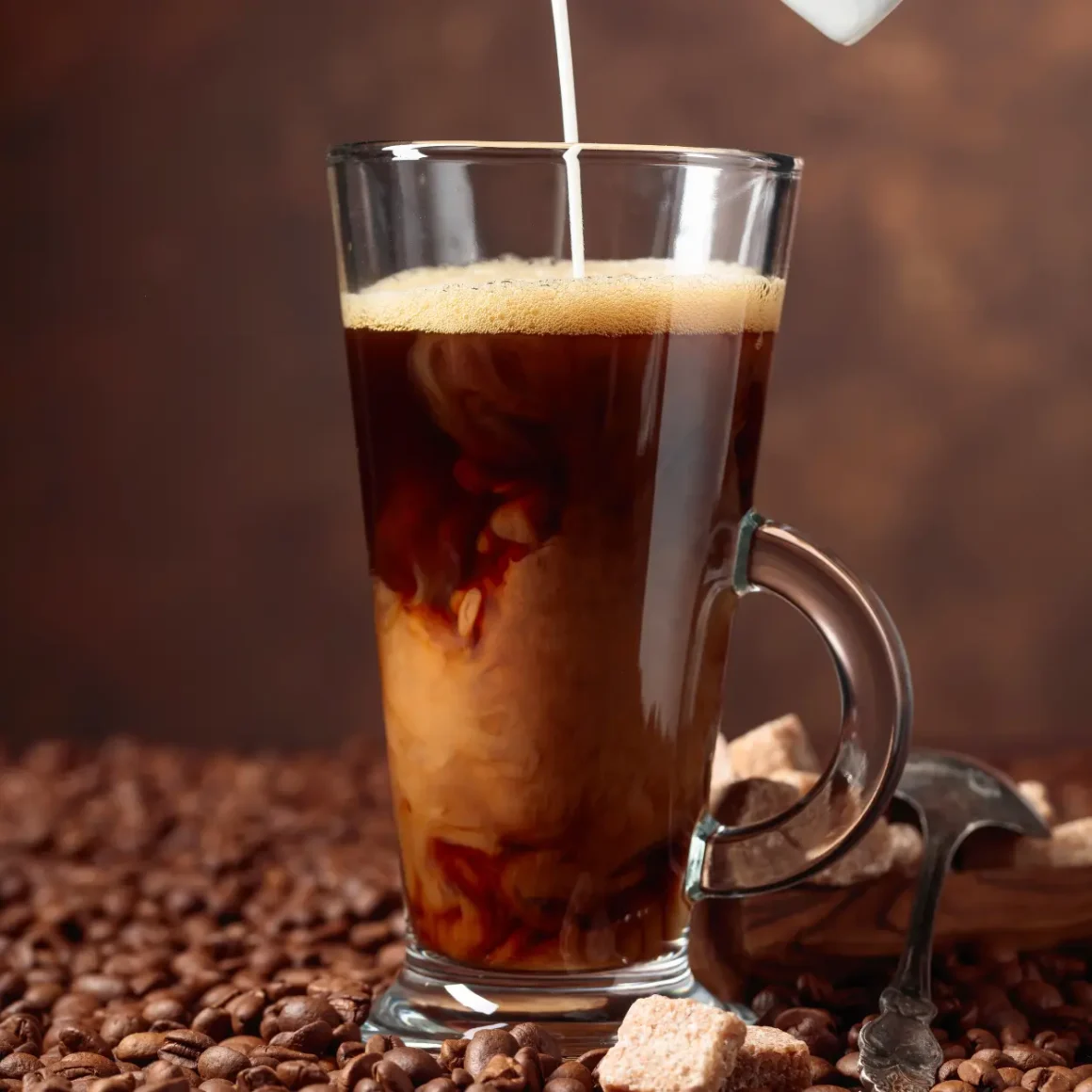
The quintessential latte finds a sweet companion in brown-sugar.
Ingredients:
- Espresso: The powerful coffee base.
- Brown-Sugar Coffee Syrup: The sweet star of this latte.
- Steamed Milk: To achieve that creamy latte texture.
Preparation:
- Brew a shot or two of espresso shots in a cup.
- Add the coffee syrup and mix.
- Pour steamed milk over the espresso-syrup blend.
The integration of this type of coffee syrup into these beloved beverages not only redefines their flavors but also offers a fresh perspective to traditional coffee recipes. Whether it’s a shaken espresso or a comforting latte, the caramel undertones of this sugar are bound to elevate your coffee experience.
Expert Recommendations on Brown Sugar Usage
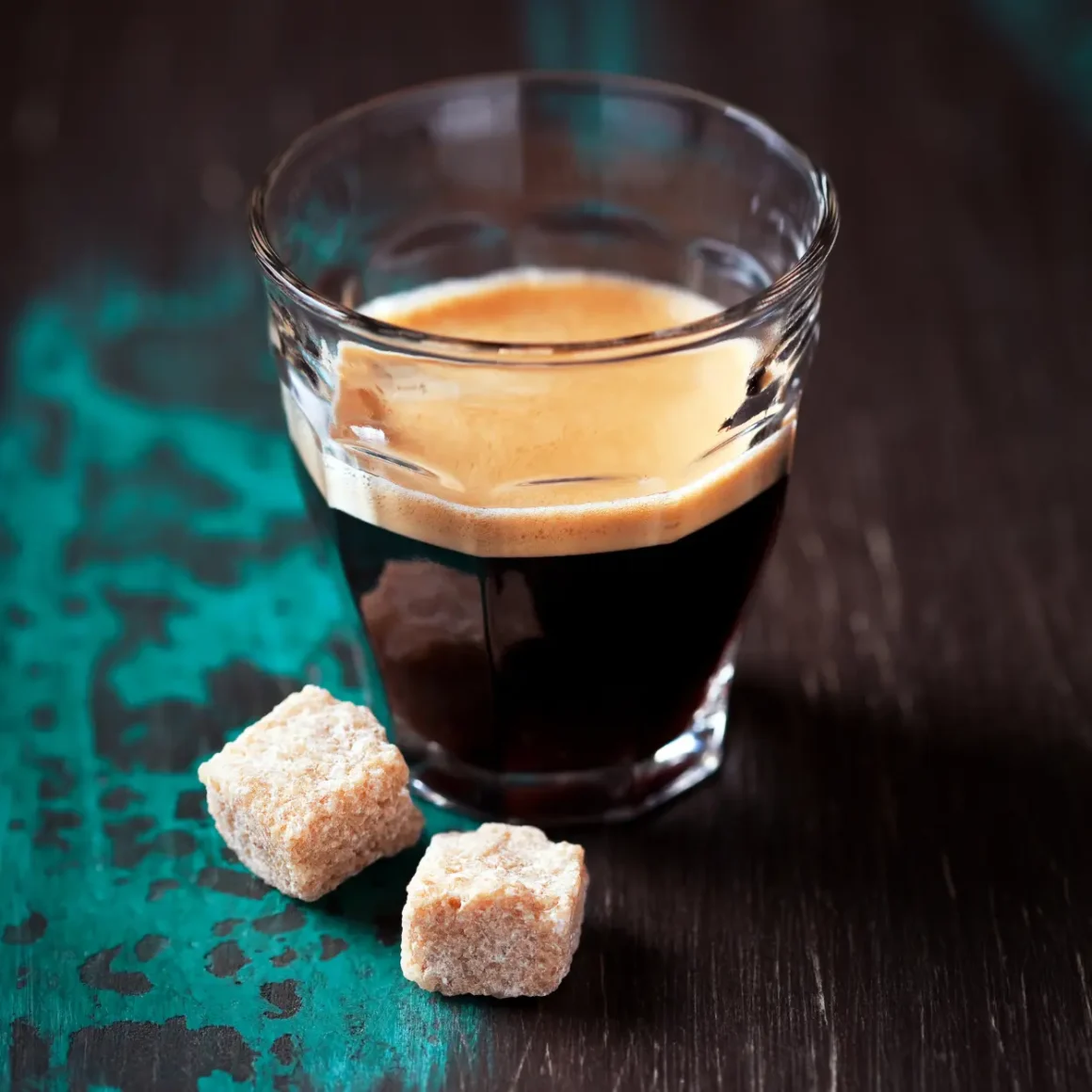
Brown sugar, with its rich molasses content and deep, caramel undertones, has carved a niche in the culinary world. In the realm of coffee, this natural sweetener has emerged as a favorite for those who yearn for a unique flavor profile in their brew. When applied correctly, this type of sugar can elevate a simple cup to gourmet status. Journey with us as we delve into the expert insights on harnessing the power of brown sugar in coffee.
Best Ratios for Brown Sugar Addition
The incorporation of this sugar in coffee isn’t merely about dumping a spoonful into your cup. The magic lies in achieving the right balance to accentuate the coffee’s taste without overpowering it.
- Single Shot Espresso or Short Brews:
- Recommended Ratio: A quarter to half a teaspoon of sugar.
- Rationale: With these briefer brews, moderation is key to ensure the essence of the coffee isn’t overshadowed.
- Long Black or Americano:
- Recommended Ratio: Half to a full teaspoon, adjusted according to personal taste.
- Rationale: These drinks offer a larger volume, allowing for a more generous addition of this type of sugar without diluting the coffee flavor.
- Lattes or Cappuccinos:
- Recommended Ratio: Depending on the milk volume, half a teaspoon to two teaspoons.
- Rationale: The creamy nature of these drinks can be complemented beautifully with the caramel notes of this kind of sugar.
In essence, while there’s no one-size-fits-all ratio, starting conservatively and adjusting according to your palate is a recommended approach.
Incorporating Brown Sugar in Different Coffee Brews
Every coffee type offers a distinct flavor profile, and knowing how to infuse this sugar can make all the difference.
- Cold Brews:
- Technique: Integrate this sugar as a syrup or dissolve it in a small amount of hot water before adding.
- Outcome: The chilled nature of cold brews gets a warm, sweet counterbalance, enhancing the overall drinking experience.
- Espresso-Based Drinks (like the iced brown sugar oat milk shaken espresso):
- Technique: Add this type of sugar directly to the hot espresso shot to ensure it melts seamlessly.
- Outcome: The resulting blend offers a harmonious marriage of strong coffee flavors and sweet caramel undertones.
- French Press or Drip Coffee:
- Technique: Introduce this sugar directly into the brew, stirring well to ensure uniform distribution.
- Outcome: The robust nature of these brews finds a gentle, sweet companion in this distinctive sugar.
When done right, the addition of this type of sugar can accentuate the natural flavors and aromas of coffee, providing a richer and more immersive experience.
Specialty Coffee Shops Embracing Brown Sugar
The gourmet coffee scene has witnessed a surge in the use of this sugar, with establishments seeking to offer a novel taste experience to discerning customers.
- Starbucks Brown Sugar Syrup: This globally-renowned chain has captured the essence of this-sugar in a versatile syrup, gaining significant popularity among patrons.
- Local Artisanal Cafés: Many specialty coffee shops have curated their versions of brown sugar coffee creamer, providing a unique, creamy sweetness to traditional brews.
- Trending Beverages: The rise of drinks like the iced brown sugar oatmilk shaken espresso in popular coffeehouses is a testament to this sugar’s growing influence.
The embrace of this kind of sugar by specialty coffee establishments is a testament to its versatility and ability to enhance a beverage’s flavor profile.
Conclusion
In the realm of coffee connoisseurship, the inclusion of this type of sugar has emerged as a game-changer, enriching the beverage’s profile and offering a blend of benefits, flavors, and rich history. As we’ve delved into the nuances of brown sugar in coffee, from the craft of making the perfect brown-sugar syrup to the expert advice on ratios and specialty coffee shop endorsements, it’s clear that this ingredient has transformed coffee drinking from a routine to a ritual.
The allure of this sugar, with its origins rooted in tradition and its modern interpretations like the iced brown sugar oat milk shaken espresso, showcases the beverage’s ever-evolving nature. In summing up this exploration, it’s evident that the fusion of this sugar in coffee not only elevates our palate but also intertwines with the very fabric of coffee culture, beckoning all to savor, experiment, and appreciate its sweet embrace.
FAQ
How does brown sugar affect the caffeine content in coffee?
This type of sugar does not alter the caffeine content in coffee; it only changes the flavor profile.
What are the top recommended coffee recipes using brown sugar?
The top coffee recipes include Iced Brown Sugar Oatmilk Shaken Espresso, Brown Sugar Caramel Macchiato, and Brown Sugar Latte.
Are there specialty coffee shops dedicated to brown sugar beverages?
While some coffee shops might highlight brown-sugar drinks, there aren't many dedicated solely to brown-sugar beverages. However, renowned brands like Starbucks have introduced brown sugar-centric beverages.
How do different cultures perceive the use of brown sugar in coffee?
Different cultures embrace this type of sugar in coffee for its rich, caramel-like taste, with some regions appreciating it for its traditional value and unique flavor depth.
